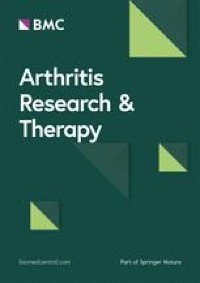Deleted member 43589
Well-Known Member
Osteoarthritis is a multi-factorial condition for which aging is the major risk factor. However, there are important differences between an aged joint and one with OA. The aging changes observed in the cells and extracellular matrix of joint tissues likely increase the susceptibility of older adults to OA when other OA risk factors are also present. OA is characterized by an imbalance between catabolic and anabolic activity in the joint and aging likely contributes to this imbalance.
Growth hormone and IGF-1 are two hormones that contribute to healthy joints. Circulating levels of GH and IGF-1 decrease considerably with age. In fact, GH and IGF-1 levels are reduced by 30–60% in the elderly. IGF-1 promotes cartilage anabolism and inhibits cartilage catabolism.

 arthritis-research.biomedcentral.com
arthritis-research.biomedcentral.com
In 2010, I had surgery by Dr. Walter Lowe in Houston to re-attach my 3 quadriceps tendons and the patella tendon. While my surgeon suspected I was using an alternative treatment to rehab, but he did not know I was using IGF-1 Lr3 in micro injections around the repaired area. In short, I was completely released to go back to competitive powerlifting training after 5 weeks or rehab. At 53 years of age, my doctors said I was the poster child for this type of surgery and said he had never seen any athlete come back to 100% after an injury like this. Was the IGF-1 Lr3 the reason? Will this peptide also work with osteoarthritis? Oh, you already know I am going to get right on this one.
Growth hormone and IGF-1 are two hormones that contribute to healthy joints. Circulating levels of GH and IGF-1 decrease considerably with age. In fact, GH and IGF-1 levels are reduced by 30–60% in the elderly. IGF-1 promotes cartilage anabolism and inhibits cartilage catabolism.
Abstract
Articular cartilage repair is a critical issue in osteoarthritis (OA) treatment. The insulin-like growth factor (IGF) signaling pathway has been implicated in articular cartilage repair. IGF-1 is a member of a family of growth factors that are structurally closely related to pro-insulin and can promote chondrocyte proliferation, enhance matrix production, and inhibit chondrocyte apoptosis. Here, we reviewed the role of IGF-1 in cartilage anabolism and catabolism. Moreover, we discussed the potential role of IGF-1 in OA treatment. Of note, we summarized the recent progress on IGF delivery systems. Optimization of IGF delivery systems will facilitate treatment application in cartilage repair and improve OA treatment efficacy.Conclusion
IGF-1 profoundly regulates cartilage repair by promoting cartilage anabolism and inhibiting cartilage catabolism. Besides, IGF-1 may delay OA progression. Effective delivery of IGF-1 to injured cartilage is a prerequisite for growth factors to exert biological functions in vivo. Current IGF-1 delivery technologies based on viral or nonviral systems need further optimization. Delivery of IGF-1 through engineered exosomes may become an efficient way in the future. However, more in-depth studies should be performed to analyze IGF function and safety before its clinical application. In summary, with the advancement and optimization of delivery systems, IGF-1 will become an alternative cartilage repair strategy for OA treatment in the future.
Insulin-like growth factor-1 in articular cartilage repair for osteoarthritis treatment - Arthritis Research & Therapy
Articular cartilage repair is a critical issue in osteoarthritis (OA) treatment. The insulin-like growth factor (IGF) signaling pathway has been implicated in articular cartilage repair. IGF-1 is a member of a family of growth factors that are structurally closely related to pro-insulin and can...
In 2010, I had surgery by Dr. Walter Lowe in Houston to re-attach my 3 quadriceps tendons and the patella tendon. While my surgeon suspected I was using an alternative treatment to rehab, but he did not know I was using IGF-1 Lr3 in micro injections around the repaired area. In short, I was completely released to go back to competitive powerlifting training after 5 weeks or rehab. At 53 years of age, my doctors said I was the poster child for this type of surgery and said he had never seen any athlete come back to 100% after an injury like this. Was the IGF-1 Lr3 the reason? Will this peptide also work with osteoarthritis? Oh, you already know I am going to get right on this one.












